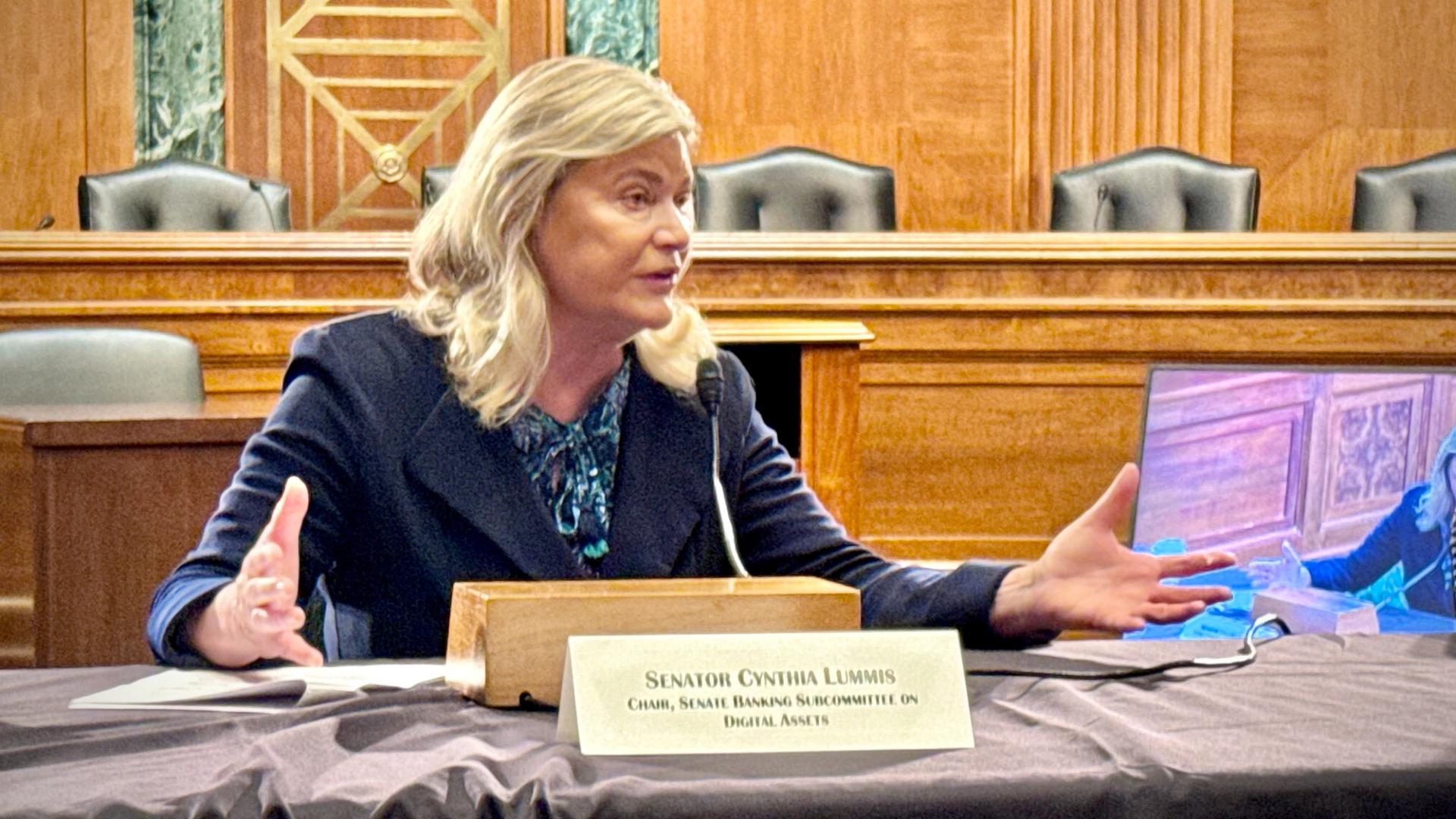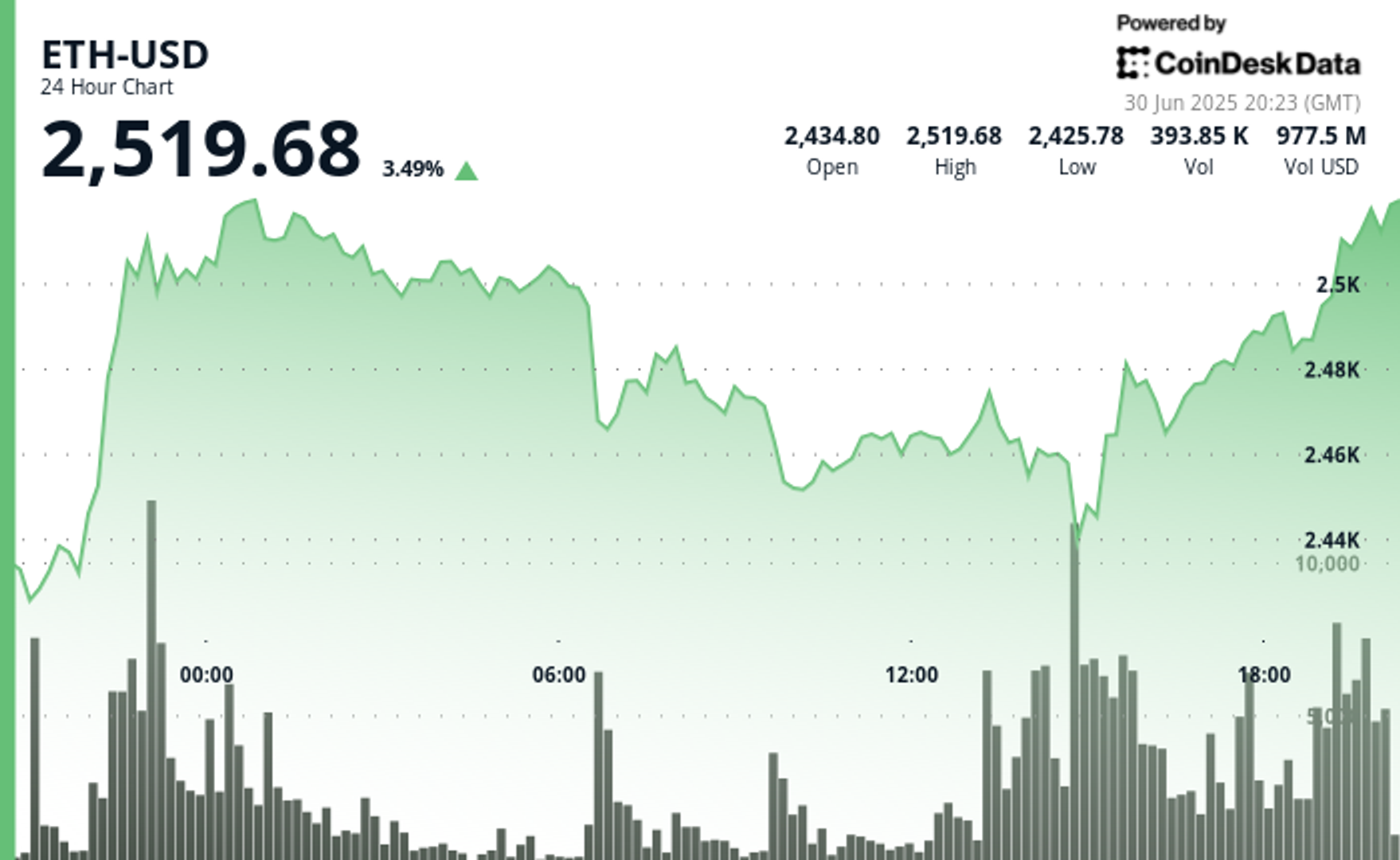Uncategorized
The Risks of Overbuilding Crypto Infrastructure

The Web3 ecosystem is often regarded as the next infrastructure of the internet. However, nearly 10 years after the release of the Ethereum white paper, we have very few mainstream applications running on that infrastructure. Meanwhile, we continue to see the emergence of new infrastructure building blocks everywhere: L1, L2, and L3 blockchains, rollups, ZK layers, DeFi protocols, and many others. While we might be building the future of the internet with Web3, there is little doubt that we are overbuilding the infrastructure layer. Currently, the ratio between infrastructure and applications in Web3 has no parallels in the history of technology markets.
Why is this happening? Simply because it’s profitable to build infrastructure in Web3.
Web3 defies some of the conventional market adoption patterns in tech infrastructure, creating both a rapid path to profitability and unique risks for its evolution. To explore this thesis further, we must understand how value is typically created in infrastructure technology trends, how Web3 diverges from this norm, and the risks posed by overbuilding infrastructure.
The Infrastructure-Application Value Creation Cycle in Tech Markets
Traditionally, value creation in tech markets fluctuates between the infrastructure and application layers, finding a dynamic balance between the two.
Take the Web1 era as an example. Companies such as Cisco, IBM, and Sun Microsystems powered the infrastructure layer of the internet. But, even during those early days, applications like Netscape and AOL emerged to capture significant value. The Web2 era was driven by cloud infrastructure, which then triggered SaaS and social platforms, catalyzing the creation of new cloud infrastructure.
More recently, trends like generative AI began as an infrastructure play with model builders, but applications such as ChatGPT, NotebookLM, and Perplexity quickly captured momentum. This, in turn, drove the creation of new infrastructure to support a new generation of AI applications — a cycle that is likely to continue for several iterations.
This constant value-creation balance between application and infrastructure layers has been a hallmark of technology markets, making Web3 a notable anomaly. But why is this imbalance so evident in Web3?
The Infrastructure Casino
The main difference between Web3 and its predecessors is the rapid path to capital formation and liquidity in infrastructure projects. In Web3, infrastructure projects typically launch tokens that become tradable on exchanges, providing substantial liquidity for investors, teams, and communities. This contrasts with traditional markets, where investor liquidity is typically realized through company acquisitions or public offerings, both of which usually take considerable time. Most venture capital firms operate on a ten-year investment cycle or longer. While rapid capital formation is one of the benefits of Web3, it often misaligns team incentives, discouraging long-term value creation.
This «infrastructure casino» is a risky pattern in Web3 because it incentivizes builders and investors to prioritize infrastructure projects over applications. After all, who needs applications when L2 tokens can achieve multibillion-dollar valuations in just a few years with minimal usage? This approach presents several challenges, and many of them are subtle and difficult to address.
The Challenges of Overbuilding Web3 Infrastructure
1) Building Without Adoption Feedback
Perhaps the most significant risk of overbuilding infrastructure in Web3 is the lack of market feedback from applications built on top of that infrastructure. Applications represent the ultimate expression of consumer and business use cases and regularly guide new use cases in infrastructure. Without application feedback, Web3 risks building infrastructure for “imaginary” use cases that are disconnected from market reality.
2) Extreme Liquidity Fragmentation
The launch of new Web3 infrastructure ecosystems is one of the main contributors to liquidity fragmentation in the space. New blockchains often require billions of dollars to bootstrap liquidity and attract tier 1 DeFi projects to their ecosystems. Over the past few months, the creation of new L1 and L2 blockchains has outpaced the influx of new capital into the market. As a result, capital in Web3 is more fragmented than ever, creating significant adoption challenges.
3) Inevitable, Increasing Complexity
Have you tried using some of the wallets, dApps, and bridges for newer blockchains? The user experience is typically difficult. Tech infrastructure naturally grows more complex and sophisticated over time. Applications built on that infrastructure typically abstract away this complexity for end users. However, in Web3 — where there is a lack of application development — users are left to interact with increasingly complex blockchains, leading to friction in adoption.
4) Limited Developer Communities
If Web3 infrastructure has outpaced capital formation, then the challenge is even greater when it comes to developer communities. dApps are built by developers, and creating new developer communities is always a challenge. Most new Web3 infrastructure projects operate with very limited developer communities because they pull talent from the same existing pool, which is simply not large enough to sustain the vast amount of infrastructure being built.
5) Widening Gap with Web2
A side effect of overbuilding infrastructure in Web3 — without app adoption — is the widening adoption gap with Web2. Trends such as generative AI are powering a new generation of Web2 apps and redefining sectors like SaaS and mobile. Instead of tapping into this momentum, the predominant trend in Web3 continues to be building more blockchains.
Ending the Vicious Circle
Launching L1 and L2 blockchains is a profitable business for investors and development teams, but that doesn’t necessarily translate into long-term benefits for the Web3 ecosystem. Web3 is still in its early stages, and while more infrastructure building blocks are certainly needed, most of the industry is currently building infrastructure without market feedback.
That market feedback typically comes from applications using the infrastructure — but such applications are largely absent in Web3. Most usage of Web3 infrastructure comes from other Web3 infrastructure projects. We continue to build infrastructure, launch tokens, and raise capital, but we are effectively flying blind.
Uncategorized
Senator Seeks to Waive U.S. Taxes on Small-Scale Crypto Activity in Big Budget Bill

U.S. Senator Cynthia Lummis is seeking to slip a significant crypto tax measure into the massive budget bill that backs much of President Donald Trump’s agenda, trying to reduce tax consequences stemming from fundamental cryptocurrency activities.
Lummis sought on Monday to insert language into Congress’ «Big Beautiful Bill» that would, among other things, waive taxes on small crypto transactions below $300 and would — in the industry’s view — rationalize a tax approach that currently has people hit for taxes on both the front end and back end of activity at the heart of the sector’s inner workings: staking and digital assets mining.
The idea of making small transactions tax-free (capped at $5,000 in overall transactions each year) would eliminate much of the burden of working out capital gains for people who only engage in a small amount of digital assets activity. That could clear a lot of headaches for those who’ve been hesitant to try crypto, the industry contends.
The amendment pushed by Lummis, which hasn’t yet come up for a vote, also addresses tax issues with crypto lending, wash sales and charitable contributions.
As the Digital Chamber put it on Monday, the move on mining, staking and other ways of gaining crypto assets would repair «a long overdue mistake on how these rewards are treated for tax purposes.»»Today, staking and block rewards are taxed upon both acquisition and point of sale,» the U.S. crypto lobbying group argued, pushing its constituents to petition Congress for support. «Senator Lummis’ provision solves this by taxing rewards only when sold, aligning policy with actual income.»
So-called validators in a blockchain are given rewards for staking their assets, providing them a return for otherwise locking up their cryptocurrency. It’s taxed when they receive the rewards and on the gains when they sell those assets. Industry critics of this approach are pushing for the change to a system that would instead tax the assets only upon their eventual sale.
Crypto mining works in much the same way, with assets created in the digital mining process and then later sold. Assets gained from aidrops and forks would also get the same treatment under Lummis’ amendment, getting taxed only when they’re ultimately sold.
The amendment might also address the wash-trading loophole lawmakers have sought for years to close. Under current rules, crypto investors can conduct a «tax-loss harvesting» strategy through strategically selling investments at a loss and immediately re-purchasing them.
The hard-fought Senate process has been going through an unlimited amendment process known as a «vote-a-rama» which began Monday morning, and Lummis sought to toss this amendment into the mix. The stakes are high for congressional Republicans on the wide-reaching bill, but party leaders have struggled to keep all of their members in the yes column as Democrats unite against it, taking issue with potential cuts to Medicaid, green energy initiatives and other aspects of the nearly 1,000-page legislation.
The U.S. House of Representatives barely passed its own version of the spending bill last month, and it would have to do so again if the Senate approves it with changes. Analysis of the measure concluded its provisions could add more than $3 trillion to the U.S. budget deficit.
UPDATE (July 1, 2025, 00:35 UTC): Adds tweet.
Uncategorized
ETH Price Surges as $2.9B Inflows, EthCC, and Robinhood’s L2 Fuel Bullish Sentiment

Ether (ETH) 3.5% in the past 24 hours to $2,519 as of 18:59 UTC on June 30, according to CoinDesk Research’s technical analysis model, supported by continued institutional demand, network upgrades, and major retail platform integrations.
Institutional interest remains robust, with CoinShares reporting $429 million in net inflows into ether investment products over the past week and nearly $2.9 billion year-to-date. This trend has coincided with a declining ETH supply on exchanges and rising staking levels, with over 35 million ETH —a round 28% of the total supply — now locked in proof-of-stake contracts. Market analysts suggest that these factors are reducing liquid supply and bolstering ether’s long-term investment thesis.
Robinhood announced on Monday that it is developing its own Layer-2 blockchain using Arbitrum’s rollup infrastructure. The network is not yet live, but the initiative will eventually support Ethereum staking, tokenized stock trading, and perpetual crypto futures. Although the L2 is under development, the decision to build it on Ethereum’s rollup ecosystem is seen as a long-term vote of confidence in Ethereum’s scalability roadmap.
Ethereum co-founder Vitalik Buterin has also introduced a new digital identity framework using zero-knowledge proofs. This system allows users to verify traits or credentials without revealing private data and is designed to help Web3 apps incorporate privacy-preserving identity systems. Analysts view this as a key step toward wider adoption of decentralized applications requiring sensitive user authentication.
Meanwhile, the Ethereum Community Conference (EthCC) kicked off in Cannes, France, gathering more than 6,400 attendees and 500 speakers. The event showcases Ethereum’s ongoing developer momentum through presentations on new tools, scaling strategies, and protocol improvements.
Despite the positive momentum, ETH remains just below its 200-day moving average, suggesting technical barriers still exist. However, the confluence of inflows, developer progress, and scaling plans continues to support a constructive outlook.
Technical Analysis Highlights
- Ether traded between $2,438.50 and $2,523 from June 29 19:00 to June 30 18:00, marking a 3.47% range.
- The largest spike occurred during the 22:00–23:00 UTC window on June 29, when ETH surged 2.9% on volume of 368,292 ETH, briefly pushing through the $2,500 barrier.
- On June 30 at 15:00 UTC, ETH found strong support around $2,438 on above-average volume, confirming a bullish floor.
- A local high of $2,523 was reached earlier in the day, establishing resistance just above the psychological $2,500 level.
- During the final hour from 18:00 to 18:59 UTC on June 30, ETH retraced from an intraday peak of $2,499.19 to close at $2,487.19.
- A sharp upward move between 18:20–18:21 saw ETH climb 1.6% on 6,318 ETH volume, stalling near $2,499.
- As of 20:23 UTC on June 30, ETH traded at $2,519, up 3.49% in 24 hours, signaling renewed bullish momentum into the Asia open.
Disclaimer: Parts of this article were generated with the assistance from AI tools and reviewed by our editorial team to ensure accuracy and adherence to our standards. For more information, see CoinDesk’s full AI Policy.
Uncategorized
Circle Applies for National Trust Bank Charter

Circle (CRCL), the company behind the USDC stablecoin, said Monday it has filed an application with the Office of the Comptroller of the Currency to form a federally regulated national trust bank.
A federal trust charter would bring Circle under direct OCC oversight, aligning it with how traditional financial institutions are regulated. If approved, the new entity, which would be called First National Digital Currency Bank, N.A. would oversee custody of USDC reserves and offer services tailored to institutions. If approved, Circle would join the ranks of federally chartered institutions like Paxos and Anchorage, both of which previously secured trust bank status to offer crypto-related services nationwide.
The trust bank status would allow Circle to operate across state lines without obtaining separate licenses in each state — a hurdle that has complicated expansion for many digital asset companies. It would also permit Circle to offer regulated digital asset custody services to institutional customers.
The move signals a strategic effort by Circle to solidify its regulatory standing as the U.S. mulls legislation like the GENIUS Act, which would create new guardrails for dollar-backed stablecoins. The company said becoming a national trust bank would help it meet anticipated requirements under the bill, which passed through the Senate earlier this month and now awaits a vote in the House of Representatives.
«By applying for a national trust charter, Circle is taking proactive steps to further strengthen our USDC infrastructure,» Circle CEO Jeremy Allaire said in a statement. «We will align with emerging U.S. regulation for the issuance and operation of dollar-denominated payment stablecoins, which we believe can enhance the reach and resilience of the U.S. dollar, and support the development of crucial, market neutral infrastructure for the world’s leading institutions to build on.”
Circle went public last month and issues the world’s second-largest stablecoin, USDC, and the leading euro-pegged token EURC.
The OCC, which oversees national banks and federal savings associations, must still review and approve Circle’s application. The agency has granted similar charters to a handful of crypto firms in recent years, signaling growing regulatory acceptance of digital asset companies operating within the traditional banking framework.
UPDATE (June 30, 2025, 20:50 UTC): Adds additional information.
-

 Business9 месяцев ago
Business9 месяцев ago3 Ways to make your business presentation more relatable
-

 Entertainment9 месяцев ago
Entertainment9 месяцев ago10 Artists who retired from music and made a comeback
-

 Fashion9 месяцев ago
Fashion9 месяцев agoAccording to Dior Couture, this taboo fashion accessory is back
-

 Entertainment9 месяцев ago
Entertainment9 месяцев ago\’Better Call Saul\’ has been renewed for a fourth season
-

 Business9 месяцев ago
Business9 месяцев ago15 Habits that could be hurting your business relationships
-

 Entertainment9 месяцев ago
Entertainment9 месяцев agoDisney\’s live-action Aladdin finally finds its stars
-

 Entertainment9 месяцев ago
Entertainment9 месяцев agoNew Season 8 Walking Dead trailer flashes forward in time
-

 Tech9 месяцев ago
Tech9 месяцев ago5 Crowdfunded products that actually delivered on the hype





